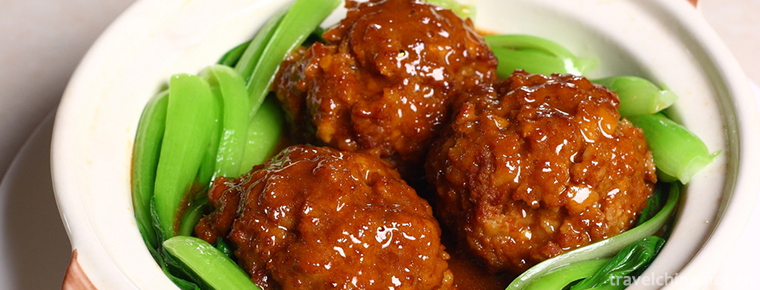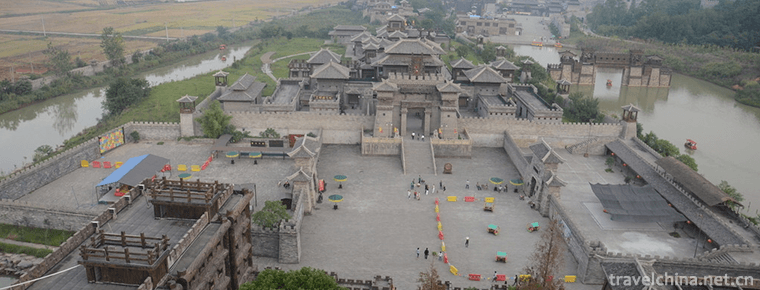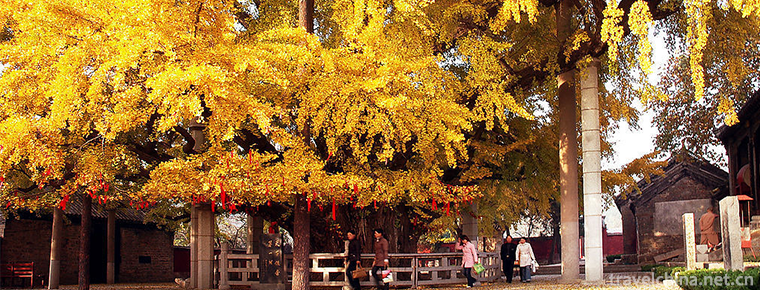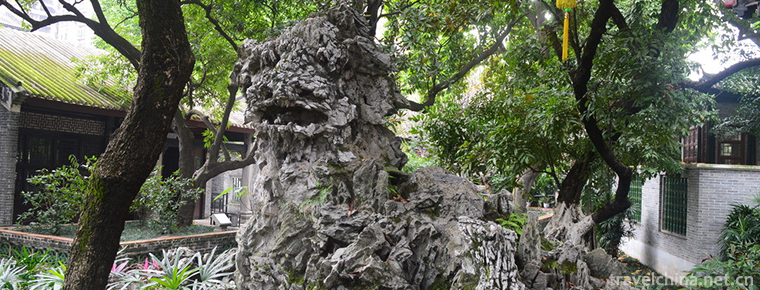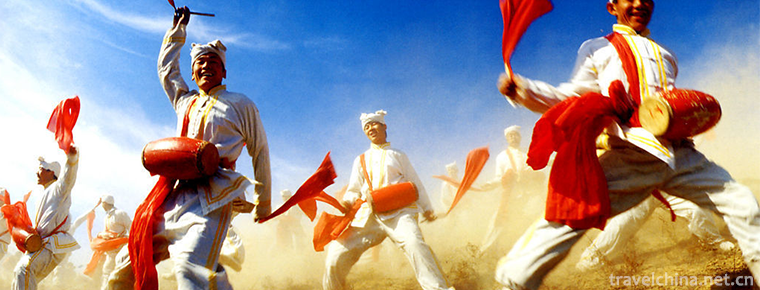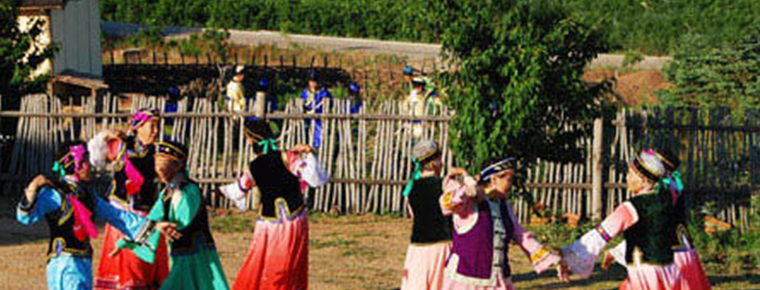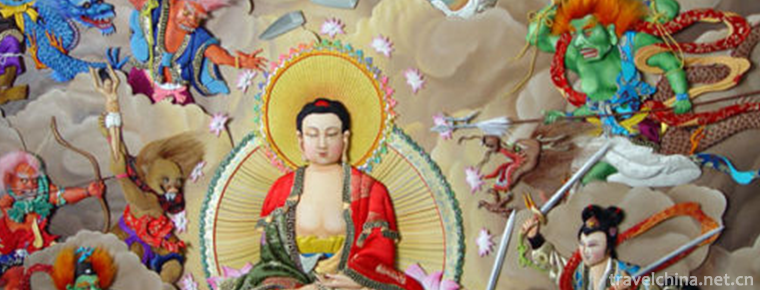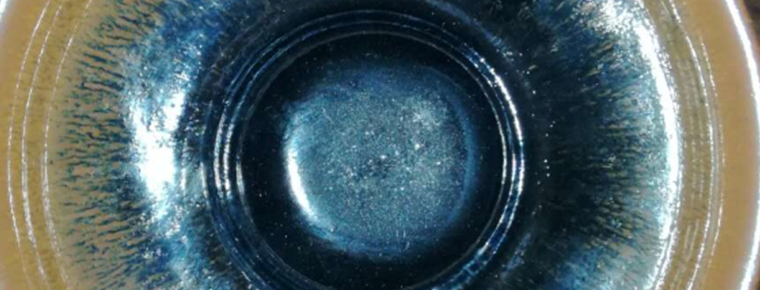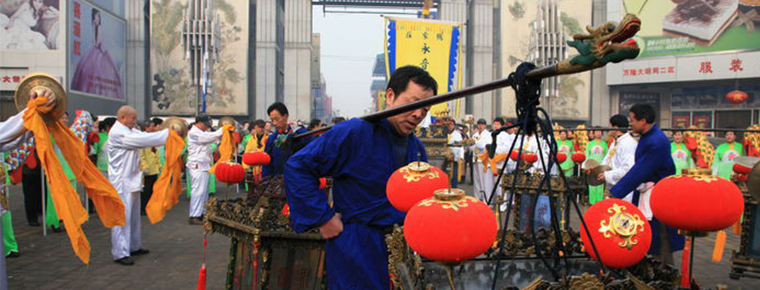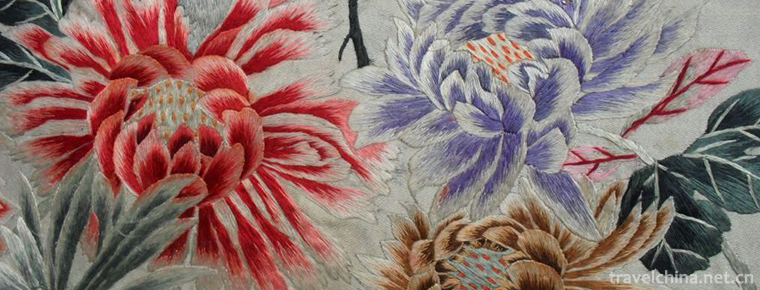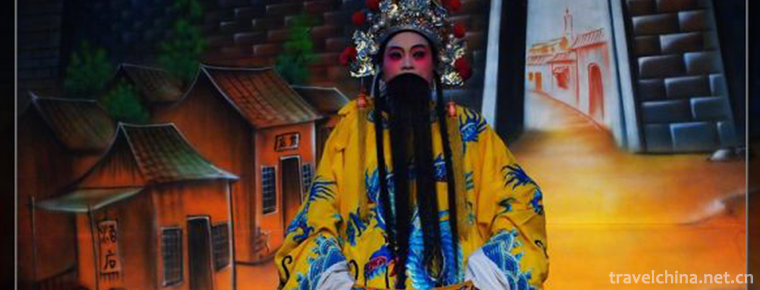Bao Mo yuan
Baomo Garden is located in Zini Village, Shawan Town, Panyu District, Guangzhou City, Guangdong Province. It was built in the late Qing Dynasty and covers an area of five mu. It was destroyed in the 1950s because of its broken four old buildings. It was rebuilt in 1995 and lasted for eight years. After four phases of construction, Baomo Garden expanded to 168 mu (about 100,000 square meters). It integrates Qingguan Culture, Lingnan Ancient Architecture, Lingnan Garden Art and Pearl River Delta Water Township.
History of scenic spots
Baomo Garden was Baoxiangfu at the end of Qing Dynasty and the beginning of Republic of China, later called Baomo Garden. The original Baomo Garden has long been destroyed and its original site has become a residential building. In 1995, the Baomo Garden was rebuilt with the donation of Hong Kong and Macao compatriots and all walks of life who are good at Renweng. Baoxiangfu Temple was built in Jiaqing period of Qing Dynasty. It is a place to worship Bao Zheng, a famous Minister of the Northern Song Dynasty and a scholar of Longtuge University. Legend has it that one year there was a flood in the Xijiang River, and a section of black wood drifted to the village side. People put it back into the river. Who knows the downstream water was big, and the wood flowed back to the village side. This happened again and again, and people thought it was very strange, so they worshipped black wood.
During the four years of Jiaqing (1799), the imperial court criticized corrupt officials and corrupt officials, which set off a trend of anti-corruption in society. As far as the impact is concerned, people naturally hope to get clean officials like Bao Qingtian to govern officials. Then the wood was carved into a statue of Bao Qingtian, where Bao Xiangfu was built.
geographical position
Baomo Garden is located in Zini Village, Shawan Town, Panyu District. Located at 22 degrees north latitude 53, 113 degrees east longitude 17 minutes, North South Yueyuan.
Scenic climate
Baomo Garden is a subtropical oceanic monsoon climate with strong seasonal wind direction. The temperature is warmer, the southeast wind is more in spring, and the northerly wind is more frequent; the southeast wind is more prevalent in summer due to the influence of subtropical high and South China Sea depression; the autumn wind turns from summer monsoon to winter monsoon, and the prevailing wind direction is northerly wind; the winter wind is controlled by cold high, mainly northerly wind, followed by the southeast wind whose average wind speed is larger in winter and spring and smaller in summer. However, tropical cyclones often affect or even land in summer. Short-term strong convective weather often occurs, and the wind speed can increase sharply to more than 8 levels. Summer precipitation is more, winter precipitation is less, the average annual precipitation is 2015.4 mm.
Collection
The white stone archway at the main entrance of Baomo Garden is magnificent and magnificent. The garden is full of fine arts such as pottery sculpture, porcelain sculpture, brick sculpture, lime sculpture, stone carving, wood carving and so on. The most amazing work in the world has been listed in the most famous inverted relief of porcelain in Guinness, Qingming Shanghe Tu. The giant brick carving Tuyan and Mingbi is exquisite in craftsmanship. The Jubao Pavilion in Lidao is magnificent and magnificent. The Cabinet is dedicated to the bronze statue of Confucius, the master of all ages, for visitors to look up to. This pavilion, together with famous paintings, calligraphy, ceramics, bronzes and jades collected by Baomo Collection, Dragon Museum and Zhao Tailai Collection Museum, reflects the long history of Chinese culture and forms a unique humanistic landscape. It is a garden art museum.
architectural composition
There are 8 scenic spots in the park: Zhibentang, Baomotang, Qingxin Pavilion, Yanglian Bridge, Zidongwan, Dragon Museum, Thousand Elephants Corridor and Flavor Food Street. There are more than 40 scenic spots, more than 30 stone bridges, numerous rivers and lakes, running water vertically and horizontally, buildings, gardens, landscapes and stone bridges. Pottery sculpture, lime sculpture, stone carving, brick carving, wood carving, stone carving, color painting, inlaid porcelain and other fine arts are all in a dazzling array. A large number of cultural relics, antiques and famous paintings are collected and displayed in the exhibition halls.
Main attractions
Overview
The main buildings and landscapes in Baomo Garden are: Zhibentang, Baomo Tang, Qingxinting Pavilion, Yanglian Bridge, Zidongfang, Dragon Museum, Thousand Elephants Corridor and Flavor Food Street. The main plants planted in the garden are millennial Luohan Old Pine, Jiulixiang, two-sided conifer, Ginkgo biloba, Yutangchun, Ficus macrophylla, Lagerstroemia japonica, etc. There are also a large number of potted landscapes in Lingnan. Baomo Garden is also a very distinctive gardening boutique park. In addition to trees, flowers and buildings, there are turtle pond, release pond, koi pond and lotus pond around the garden.
Archaize memorial archway
The white stone archway at the main entrance is magnificent and magnificent. The garden is full of pottery sculptures, porcelain sculptures, brick sculptures, gray sculptures, stone carvings, wood carvings and other fine arts. Among the most amazing works in Guinness in the world, the relief of porcelain sculpture "Upper River in Qingming Dynasty" and the giant brick sculpture "Tuyan and Mingbi" have been listed. The Jujia Pavilion in Lidao is magnificent and magnificent. The Cabinet is dedicated to the bronze statue of Confucius, the master of all ages, for visitors to look forward to.
Radical cure Hall
Zhao Tailai's Collection of Quality Management Hall was originally named Baogong Hall. It was named "Pure Heart" in Bao Zheng's Five-Character Poem Tixun Zhai Bi, which means that honesty and integrity of officials is the foundation of governing the country. The Chinese painting Lotus hanging in the hall symbolizes Bao Zheng's honesty and holiness. The couplets in the hall: "The more achievements a thousand years, the more virtuous the people will remain in later generations, the same origin, the same line of its pure water to the sages." We are all descendants of the Yellow Emperor and the Yan Dynasty. Bao Zheng's spirit of being clean and honest is worthy of admiration and learning. The granite plaque of Baomo Garden after Zhibentang is the only authentic work of the old Baomo Garden.
Bao Mo Tang
The portrait of Bao Zheng hanging in the middle of Baomotang was created by Han Yunlang, a famous Chinese painter in Sichuan Province.
Bao Zheng was born in the second year of Xianping, Song Zhenzong (A.D. 1999) and died in 1062, when he came to Jiayou for seven years. He was a magistrate in Kaifeng and a deputy envoy to the Privy Council. After his death, he pursued filial piety. His official position is equivalent to that of today's mayor of Beijing. Bao Zheng is an honest and honest official. He specializes in fighting injustice for the common people, curing corrupt officials and being unselfish. Two old elm trees in front of Baomotang, nearly a hundred years old, are giant bonsai full of ancient tree style. Because it is vigorous and upright, and in front of Bao Zhengxiang, like a guard of justice, so it is known as General Tree.
On the top of the ridge of Gomotang, there are a group of Bao Zheng's inkstone pottery statues. You can see them clearly from the Jianqing Bridge opposite Baomotang. Bao Zheng is said to have been an official in Duanzhou (including Zhaoqing City) for three years. He is honest and upright. He teaches people to cultivate fields, open wells and treat diseases. He is deeply loved by the people. Duan inkstone is a treasure of literature at home and abroad. Legend has it that there is a craftsman who makes Duan inkstone. He admires Bao Zheng very much. He wants to give one inkstone as a tribute, but Bao Zheng does not accept it. Later, when Bao Zheng left his post and returned to Kaifeng Mansion, the Mason took the opportunity to show his family Baoxing that Duanyan was concealed on the boat and sent it to Bao Zheng. But when the boat arrived at the Antelope Gorge on the edge of Duanzhou, it suddenly became dark and rainy, and the boat could not go. Bao Zheng thought:
I've been an official in Duanchuan for three years. Is it unreasonable that I did something wrong? When I think about it, I can't figure out the reason, so I ask my family. Baoxing confessed his mistake when he knew that the Tibetan Inkstone was not right. Bao Zheng-sheng Baoxing immediately presented the upper inkstone. The inkstone was wrapped in yellow cloth. When he untied the Yellow cloth, he saw that the inkstone was of excellent quality and exquisite workmanship. He said, "The inkstone can not be returned to itself, but also to the people of Duanzhou." Duan Yanlian Huangbu was thrown into the river together. Suddenly. After the rain, the weather was clear and the wind was calm. Later, an inkstone-throwing Island emerged on the inkstone-throwing River surface. The yellow-throwing river surface formed a Huangbu sandbar. Now there is Baogong Temple on the inkstone-throwing river.
Dragon Museum
The Dragon Museum has a very ancient Lingnan architectural style. There are corridors in front and back, patio in the middle, wind volcanic wall. There are many brick sculptures, wood sculptures, clay sculptures and gray sculptures outside the library. They are exquisitely crafted, simple and elegant. Outside the gate, 18 Arhatsons lined up to symbolize the guard of honour when Bao Gong was on tour. Next to it is a row of red-flowered crape myrtle, which blossoms in season and is bright red and green, reflecting each other interestingly. Under the plaque of "Dragon Museum", there are couplets: "Wood and stone can reproduce Bao Gongqing's official affairs, craftsmen have no regrets to pass on people's feelings of honesty and integrity." The ancient motto of Ming Dynasty still remains in Zhenjiang Stream, and the Song Dynasty's classics have never failed to live up to the law. It not only praised Baogong's brilliant achievements, but also highlighted the cultural connotation of the Dragon Museum.
In the middle of the entrance is a giant red sandalwood screen. The screen is 3.5 meters high and 4.5 meters wide. It consists of five fans. In the middle is the statue of Bao Gong, a group of righteousness and awe-inspiring. Next to it are two lines in Bao Gong's legacy poems: "Clear heart is the root of cure, straightforward way is personal experience". This is the essence of Bao Gong's legacy poems. Myth and legend have it that Baogong is a literary and musical star in the sky and Di Qing is a martial arts star. Therefore, on the right side of Baogong's statue are Di Qing Pingnan and Pingxi, and on the left side are the stories of the Huyan family breaking through the Five Elements Array. The pictures show flags flying, horses galloping and people's eyebrows vivid, which shows the heroic spirit of the generals and soldiers defending the great Song River and Mountains at that time. The top of the screen is Yunlong, and the edge of the screen is Kirin, A Rui animal. The screen is very delicate. The screen seat is filled with lotus beards of Buddhism, carved with delicate lotus petals, and the bottom is a Dragon pattern of Western Han Dynasty style. Behind the screen are inscriptions of Bao Gong's family instructions, a bird's-eye view of Baomo Garden and a monument to the construction of Baomo Garden. The screen was exquisitely carved by Shawan young sculptor He Shiliang and 15 assistants for a year and a half.
Zhao Tailai Collection Museum
Zhao Tailai Collection Museum was built according to the specifications of ancestral halls (ancestral halls and family temples) in the late Qing Dynasty in the Pearl River Delta. Outside it were double rolled ear Gables (zizi Bracelet ears), water-milled green brick and white stone feet, with the front door of the word "Hui". The inscriptions on tablets and couplets were the handwriting of the late famous Lingnan painter, Mr. Li Xiongcai, at the age of 94. Mr. Zhao Tailai is a British Chinese, an honorary citizen of Guangzhou, and the forever honorary director of Baomo Garden. Mr. Lo Zhongjian is a famous collector and consultant of Baomo Garden in Hong Kong. They are all eager to donate famous paintings to Guimo Garden, while Mr. Zhao Tailai has donated 41 large-scale Tibetan "Thangka" as well as huge treasures such as Tongguanyin, Tongma and Tongxianglu in Ming Dynasty.
"Thangka" is a religious painting of Tibetan Buddhism, which originated very early and was most prevalent in the Tang Dynasty, so it is known as "Thangka". In Zhaotailai Collection Museum, 41 Tibetan "Tangka" are collected, including Buddha Yingmu, Bodhisattva Guanyin and Bodhisattva Manjusri in different postures. There are various Buddhist vajrayans, as well as various ancestors of Tibetan Buddhism. Among them is a picture of Songzan Ganbu, the Tibetan king. In the center of the museum, a special large glass cabinet is used to display the Ming Dynasty bronze statue of Ming Dynasty Gold Guanyin donated by Mr. Zhao Tailai, a pair of Ming Dynasty gold bronze horses and a large bronze incense burner. Before Guanyin, put a bronze incense burner with beast's ears and three feet. Four copper crafts are rare treasures.
Purple Bamboo Garden
There are more than 20 kinds of precious bamboo in Zizhu Garden, including Zizhu, Pink Bamboo, Fobei Bamboo, Guanyin Bamboo, Golden Bamboo, Silver Bamboo, Sifang Bamboo, Violin Bamboo, etc. In Zizhu Garden, there is a flowing cup pavilion, which imitates the ancient people's winding water scenery.
Thousand elephant corridors
Thousands of elephants corridor, take its meaning of "thousands of feet" and "thousands of weather". The corridor is about 4.6 meters high and 2-2, 5 meters wide, with arch-shaped green tiles as the item. Sloping grid-like upper transverse slope, wooden-like stone benches for visitors to rest on both sides of the corridor. The corridor is the venation of the garden. It has the functions of shading, rain proof, viewing, tour guide, visiting and selecting scenery. The 1000-meter-long "Thousand Elephant Corridor" is built according to the layout of the building, with the ups and downs of the terrain.
Purple Ribbon Bridge
Zidai Bridge across Qingping Lake is a traditional nine-hole stone arch bridge with exquisite workmanship. On both sides of the bridge are three-dimensional stone carvings with well-known stories, such as "Records of the Eastern Zhou Dynasty", "Romance of Sui and Tang Dynasties" and "Romance of the Three Kingdoms". Ziqi Qinghui archway in front of Zidai Bridge is a monument built in memory of Bao Zheng, a famous Minister of the Northern Song Dynasty, and in praise of the culture of clean officials. In terms of architectural style, this archway is a five-fold four-pillar, hump-dome-style white marble building modelled on ancient rituals.
Zidong Boat
Baomo Garden's Purple Hole Bo is located on the Bank of Qingping Lake. It is 21 meters long, 6.8 meters wide and 8.7 meters high. It has two layers. The area of each layer is about 70 meters. The main structure is reinforced concrete. The interior and exterior decorations are all precious teak. Because of the fine workmanship and ingenious decoration, it is like all wood.
There are altogether 10 hangings in the whole boat, all of which are flower carvings. Among them, there are litchi festival, auspicious peach inviting the moon, eight immortals celebrating longevity, bamboo announcing peace, rich flowers, pine crane extending life and other flowers, birds, insects and fish. The large wooden carvings on the bow of the boat "Birds Chao Feng" are more vivid and brilliant. The 100 birds, each with its own style and decoration, are all made of flower pear and sour wood. The courtly chairs are matched with imitation Song Dynasty utensils, which are luxurious and dazzling. The large screen of "Jiulion Club Golden Dragon" and the carving of the wonderful clips of "Qingming Shanghe Tu" are exquisitely crafted, which is also called fine works. The first floor of Gunnei is a place where 40 people can listen to music for tea. It mainly plays Cantonese music and Cantonese opera.
Living water system
After the retirement of Liang Weisu, former Secretary of the Panyu Municipal Party Committee, he devoted himself to the construction of Zini Baomo Garden and worked out a water circulation system. There are many carps in the park, but the water in the pond is clear. Many company bosses once offered a lot of money for the secret solution of water control in Baomo Garden, but the old secretary did not agree. Later, after repeated entreaties from Huang Wenzai, the owner of Xinghe Bay, the old secretary agreed to introduce the system into Xinghe Bay.
Tourist guide
Open information
Opening hours: 8:30-17:30 (stop ticketing at 17:00)
Transport line
Transportation: Guangzhou Bus Passenger Station (suburban County station) to Baomoyuan, 6 buses a day, 8:00, 9:10, 10:20, 11:50, 14:20, 15:40. You can also take Metro Line 3 to get off at Shiqiao Station. After leaving the station, you can take a special line bus that can reach Shawan Baomo Garden. It costs 3 yuan for the whole journey and runs every 10 minutes.
Bus Route: From Guangzhou Railway Station to Liuhua Station, take 301 Express Line (City Passenger Station-Panyu Shiqiao Bus Station) (1 Station) to Panyu Shiqiao Bus Station, transfer to Shiqiao-Baomoyuan Special Line (27 Stations) to Baomoyuan General Station, walk about 250 meters to Baomoyuan.
Metro Line: In Guangzhou Metro, take Line 3 to Shiqiao Station and get off Exit B. At the bus station next to the exit, take Bus No. 67 to Baomoyuan General Station.
Self-driving line:
Guangzhou to Baomo Garden: 1. South China Express (or Luoxi Bridge) - Panyu Yingbin Road - Shiqiao East Ring Road (or Xihuan) - Shiliang Road - Baomo Garden
2. Xinguang Express Line-Shixi Ring Road-Shiliang Road-Baomo Garden
Shenzhen, Dongguan to Baomoyuan: Guangshen Expressway - Humen Bridge - Nansha Avenue - Shawan Bridge (left turn) - Shiliang Road - Baomoyuan
Zhongshan, Zhuhai to Baomoyuan: 1. Beijing-Zhuhai Expressway - Tingjiao Exit to Shiqiao Direction - Nansha Avenue - Shawan Bridge (left turn) - Shiliang Road - Baomoyuan 2, Zhongshan, Zhuhai - 105 National Road - Bigui Road - Longzhou Road - Shiliang Road - Baomoyuan Foshan to Baomoyuan: Guangfo Expressway - Fochen Road - Bigui Road - Longzhou Road - Shiliang Road Baomo Garden










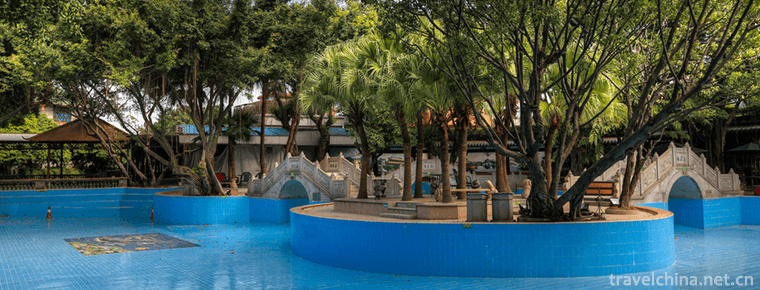
-
Stewed Pork Ball in Brown Sauce
Lion head is a traditional dish in the Huaiyang cuisine of Yangzhou, Jiangsu, China. Legend has it that Lion's Head began in the Sui Dynasty.
Views: 341 Time 2018-10-27 -
Chibi ancient battlefield
The ancient battlefield of Chibi in the Three Kingdoms, where the battle of Chibi took place, is located on the South Bank of the Yangtze River in the northwest of Chibi City, Hubei Province.
Views: 392 Time 2018-12-12 -
Fulaishan Scenic Area
Fulaishan Scenic Spot, located about 8 kilometers west of Juxian County Town, is a national AAAA-level tourist scenic spot, provincial scenic spot, provincial geological heritage nature reserve, and i.
Views: 141 Time 2019-01-12 -
Qinghui Garden
Qinghui Garden is an ancient garden building built in Ming Dynasty. Located in Qinghui Road, Daliang Town, Shunde District, Foshan City, Guangdong Province,.
Views: 203 Time 2019-02-07 -
Ansai waist drum
Ansai waist drum is a traditional folk dance in Shaanxi Province. Performances can be performed by several people or thousands of people together, magnificent momentum, exquisite performance is intoxi.
Views: 229 Time 2019-03-31 -
Daur Ruzhigle Dance
"Luzhigle" is a representative folk dance of Daur nationality. It varies from place to place, including "Alhambo", "Langtudabe", "Hakumai", "Hagen Melger&q.
Views: 103 Time 2019-04-22 -
Pile brocade
Duijin, also known as Shangdang Duijin, is a handicraft hand Duijin is developed on the basis of traditional Chinese painting and embroidery. It is made of silk as the main fabric.
Views: 136 Time 2019-04-28 -
Burning Technology of Building Kiln and Building Calendula
Kiln building Calendula firing technology, the local traditional skills of Nanping City, Fujian Province, one of the national intangible cultural heritage..
Views: 288 Time 2019-05-05 -
Jin men drum
Jinmen Fagu is a local traditional music and dance art in Tianjin, which appears in the form of performances of the Lao Hui or the Sacred Congregation. In June 2008,.
Views: 137 Time 2019-05-07 -
Suzhou embroidery
Suzhou embroidery is the general name of embroidery products in Suzhou area. Its origin is in Wuxian, Suzhou. Now it has spread all over Wuxi, Changzhou and other places. Embroidery and silkworm reari.
Views: 121 Time 2019-06-17 -
Wuju Opera
Wu Opera, commonly known as Jinhua Opera, is one of the local operas in Zhejiang Province. It centers on Jinhua area and is popular in Jinhua, Lishui, Linhai, Jiande, Chun'an, Yushan, Shangrao, Guixi,.
Views: 220 Time 2019-06-30 -
Deyang post and Telecommunications
By the end of 2018, the total telecom business of Deyang City has reached 12.95 billion yuan, with 701000 fixed telephone users and 3.998 million mobile phone users. The total length of optical cable at the end of the year is 138000 skin kilometers..
Views: 309 Time 2020-12-14
